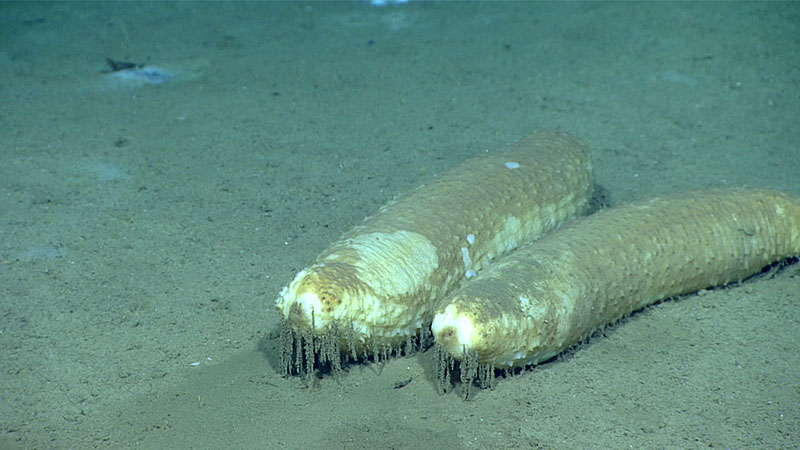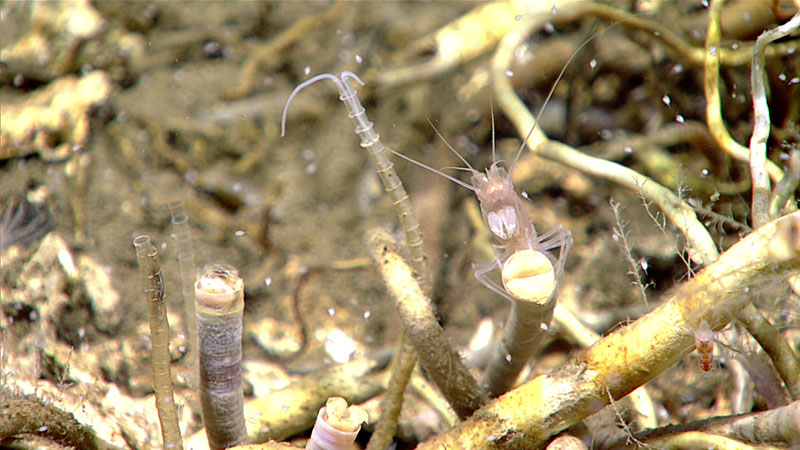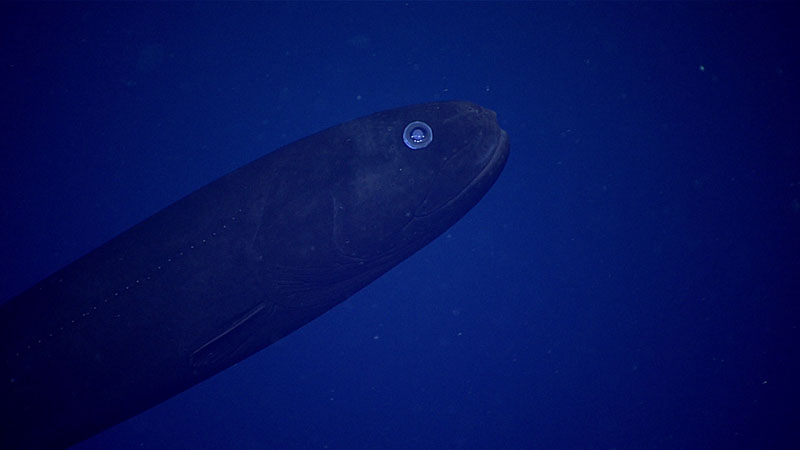-

Paroriza pallens sea cucumbers were the most frequently encountered large deposit feeders on this dive. The species is hermaphroditic and was often observed in pairs such as this one. The nature of the shaggy filaments hanging from the flanks of these sea cucumbers remains a mystery. Image courtesy of the NOAA Office of Ocean Exploration and Research, Gulf of Mexico 2017. Download larger version (jpg, 877 KB).
-

A dense cluster of Escarpia sp. chemosynthetic tubeworms at a cold seep, accompanied by an Alvinocaris sp. shrimp and a chaetopterid polychaete waving its pair of feeding palps from its slender bamboo-like tube. Image courtesy of the NOAA Office of Ocean Exploration and Research, Gulf of Mexico 2017. Download larger version (jpg, 960 KB).
-

Fish experts on the global midwater team were blown away by the appearance of this fish from the genus Leptochilichthys. The observation placed this fish at a shallow depth of 900 meters (2,953 feet), when typical observations place this fish squarely in the bathypelagic zone at ~2,000 meters (6,562 feet). Image courtesy of the NOAA Office of Ocean Exploration and Research, Gulf of Mexico 2017. Download larger version (jpg, 589 KB).